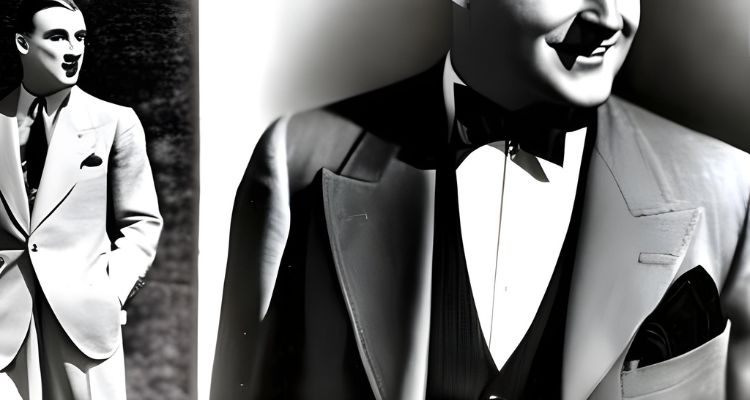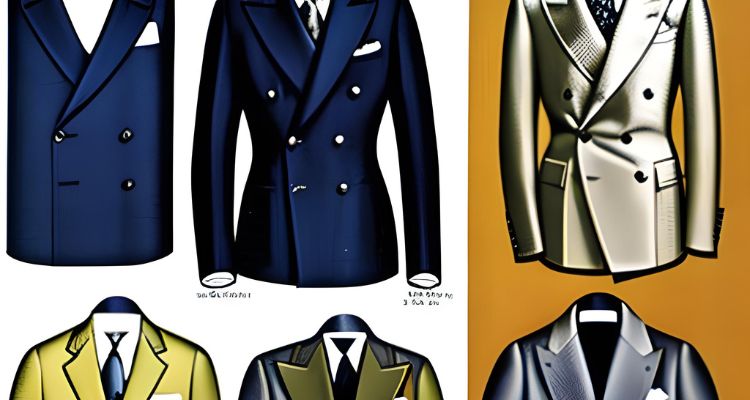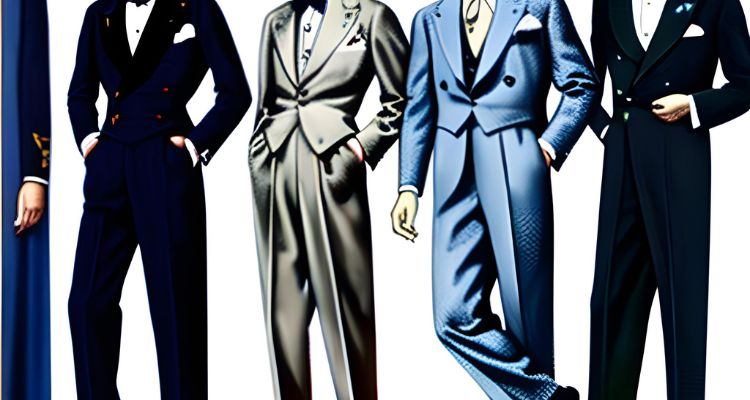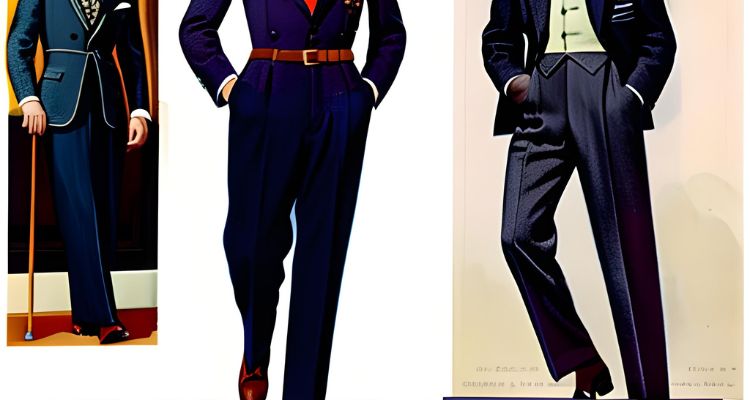The 1930’s Mens Fashion is one era that stands out for its sophisticated fashion because of its timeless elegance in men’s fashion that transcends fads and eras. Men’s clothing of the 1930s radiated refinement and class against the backdrop of the economic hardships caused by the Great Depression. During this time, men’s fashion was set by legendary actors like Fred Astaire and Clark Gable as Hollywood became more and more of a cultural impact.
The clothing choices of the 1930s represented a sense of timeless beauty that continues to influence current design, from formal clothes to casual wear. The best features of men’s design from the 1930s will be covered in this article as we examine the styles, materials, accessories, and icons that shaped this decade’s fashion. Join us as we explore the sartorial splendor of the 1930s, a period in which classic elegance ruled supreme.
I. Historical Background
Men’s fashion was significantly impacted by the profound social and cultural transformations of the 1930s. The globe was experiencing a period of economic unrest during this time, and many people and families faced financial difficulties as a result of the Great Depression. Fashion was significantly impacted by the current state of the economy, with a focus on practicality and durability in garment selections.

Despite the financial difficulties, Hollywood rose to prominence as a cultural force in the 1930s, and films gained popularity as a source of entertainment. Hollywood’s leading males, including Cary Grant, Humphrey Bogart, and Clark Gable, captivated the public’s attention with their dapper appearances and sartorial dexterity. Their on-screen personas and wardrobe selections had a big impact on men’s fashion throughout this time.
Additionally, gender roles and cultural conventions underwent change during the 1930s. Men’s fashion changed to mirror the shifting social dynamics, moving towards a more casual and comfortable look while yet maintaining an appearance of refinement and elegance.
Understanding the 1930s’ historical backdrop helps to put the decade’s fashion choices, which were influenced by cultural changes, Hollywood influences, and economic hardships, into context. It serves as a starting point for examining the distinguishing features of men’s clothing of the time, displaying the particular fusion of functionality and elegance that characterized 1930s design.
II. Silhouettes and Fabrics
Men’s clothing in the 1930’s Mens Fashion featured a timeless and exquisite look because to a fusion of traditional and modern features in the shapes and textiles. The clothing’ cuts and forms were purposefully chosen to highlight the male body while still retaining an air of sophistication and refinement.
The style of a typical suit at this time was characterized by a relatively narrow, extended jacket with padded shoulders, a nipped-in waist, and a longer length. Suits were a mainstay of men’s fashion throughout this time. High-waisted trousers frequently had broad legs that tapered to the ankle for a streamlined appearance. Particularly popular were double-breasted suits, which gave men’s clothing of the era an additional air of formality and refinement.

Men’s clothing from the 1930s was made out of fabrics that were chosen for their high caliber, strength, and opulent feel. Worsted wool and flannel were two frequent varieties of the favored fabric for suits, which was wool. Tweed, a heavy, textured cloth that provided warmth and style during the colder months, was also popular for outerwear and sports coats.
For formal wear and dress shirts, in addition to wool and tweed, additional materials like silk and rayon were employed, lending a sense of refinement and elegance. Shirts were often constructed from thin materials with delicate designs or simple colors. A classy finishing touch was added to an ensemble with the use of accessories like ties, bow ties, and pocket squares that were made of silk or satin.
The shapes and materials of men’s clothing in the 1930s exhibited a feeling of refinement and attention to detail, with an emphasis on premium fabrics and handiwork. A sophisticated and polished appearance that embodied the timelessness of this era was produced by the slender and streamlined suits’ cuts and the opulent materials they were made of.
III. Formal Attire
In the 1930s, formal wear was all about conveying a feeling of refinement and elegance, with careful attention to detail and a sophisticated aesthetic. Men’s formal attire throughout this time period adhered to a certain set of fashion guidelines and was frequently worn for special occasions, evening events, and formal meetings.
In the 1930’s Mens Fashion, tuxedos, often referred to as dinner jackets, were the height of men’s formal wear. They had matching pants with a satin stripe down the leg and a fitted black jacket with a satin or grosgrain lapel, sometimes in a shawl or peak form. A traditional and timeless silhouette was created by the single-breasted jacket and high-waisted, wide-legged pants.

Typically white, silk, or cotton shirts with a pleated front or textured bib were used with tuxedos. The shirts had a removable collar that could be either wingtip or turndown. A silk or satin bow tie was frequently worn with them. Over the pants, a waistcoat or cummerbund was frequently worn to give another level of formality.
Men donned polished black patent leather shoes with modest heels to complete the formal ensemble. Cufflinks, studs, and a pocket square were utilized as accessories to provide a sense of class and refinement to the attire. Socks were normally black and made of silk or fine cotton.
With a focus on precise cuts, opulent materials, and attention to detail, formal dress in the 1930s1930’s Mens Fashion was a reflection of the time’s sophisticated and polished style. With its classic and polished look that transcends fads and is still relevant today, formal attire from this era continues to inspire current men’s fashion.
IV. Casual Wear
While formal attire was reserved for special occasions, men’s casual wear in the 1930s reflected a more relaxed and comfortable style, while still maintaining an air of elegance. Casual clothing during this era was designed to be practical and functional, with a touch of sophistication that reflected the fashion sensibilities of the time.

One popular casual outfit for men in the 1930s was the sports jacket and slacks combination. The sports jacket, also known as a sports coat, was typically made of tweed or other textured fabrics, with a slightly looser fit compared to formal jackets. It featured a notched lapel, patch pockets, and a two or three-button front. The slacks, or trousers, were usually made of wool or cotton and had a straight or slightly tapered leg, providing a comfortable yet polished look.
Shirts worn with sports jackets were often made of cotton or other lightweight fabrics, with subtle patterns or solid colors. They typically had a turndown collar and were worn with a necktie, although a more relaxed open-collar look was also common for casual occasions. Sweaters made of wool or knit fabric were also popular for layering, adding warmth and style to a casual outfit.
For footwear, casual shoes such as loafers or lace-up oxfords were commonly worn. Socks were usually made of cotton or wool, and patterns and colors varied depending on personal style and preference. Accessories such as a fedora hat, a pocket square, and a wristwatch were used to complete the casual look with a touch of sophistication.
Casual wear in the 1930s was characterized by a blend of comfort, practicality, and refined style. The emphasis was on relaxed yet polished looks, with attention to quality materials, subtle patterns, and timeless design elements. This approach to casual wear during the 1930s continues to influence men’s fashion today, as it embodies a sense of timeless elegance that transcends changing fashion trends.
V. Accessories
Accessories played a significant role in men’s fashion during the 1930’s Mens Fashion adding the finishing touches to complete a polished and sophisticated look. Men paid attention to details, and the right accessories were used to elevate their style and express their personal taste.
One popular accessory during the 1930s was the fedora hat. Fedora hats were made of felt or straw and featured a wide brim and a pinched crown. They were typically worn with formal or casual attire and were available in various colors and styles, providing a stylish and functional addition to men’s wardrobes.
Another essential accessory in the 1930s was the necktie. Neckties were an integral part of formal and casual wear, and they were usually made of silk or other fine fabrics. Necktie styles varied, from wide and bold patterns to more subtle and conservative designs. Bow ties were also popular, especially with formal wear, and were typically made of silk or satin.
Cufflinks and studs were commonly used to fasten the cuffs and front of formal shirts, adding a touch of elegance and sophistication to the outfit. Cufflinks were typically made of precious metals, such as gold or silver, and featured intricate designs or gemstone accents. Studs, which were used in place of buttons, were typically smaller and made of the same material as the cufflinks, creating a coordinated and refined look.
Wristwatches were another popular accessory in the 1930’s Mens Fashion, adding both function and style to men’s fashion. Wristwatches were typically made of precious metals, such as gold or stainless steel, and featured leather or metal straps. They were considered a symbol of status and sophistication, and men took pride in wearing quality timepieces that complemented their overall style.
Other accessories such as pocket squares, belts, and suspenders were also commonly worn during the 1930s. Pocket squares, made of silk or linen, were used to add a pop of color and pattern to the breast pocket of jackets, while belts and suspenders were used to hold up trousers and create a polished and put-together look.
Accessories were considered an important part of men’s fashion during the 1930s, as they added the finishing touches and elevated the overall style. Attention to detail and a sense of refined elegance were key aspects of men’s fashion during this era, and accessories were used to enhance and express that sense of timeless sophistication.
VI. Icons of 1930s Men’s Fashion
The 1930s witnessed the development of a number of notable people whose attire and sense of style affected men’s fashion at the time and still serve as an inspiration for contemporary design today. These people set the bar for men’s fashion in the 1930s thanks to their exquisite taste and sartorial sophistication.
Clark Gable was a fashion symbol of the 1930’s Mens Fashion and is best known for playing the lead in vintage Hollywood films. He made the traditional “Gable look,” which comprised a double-breasted suit with broad shoulders, a wide lapel, and a long jacket length, more well-recognized. Many men in that time period modeled their fashion choices after Clark Gable, who projected confidence, refinement, and masculinity in his choices of attire.
Fred Astaire was a style icon of the 1930’s Mens Fashion and was well-known for his dancing and theatrics. He was well renowned for his sophisticated and stylish appearances, frequently seen with double-breasted suits, high-waisted pants, and polished dress shoes. Astaire’s flawless grooming and attention to detail established a benchmark for men’s formal attire, and his sense of style was considered as classic and refined.
Another Hollywood star, Cary Grant, was well-known for his sartorial sophistication and debonairness in the 1930s. He frequently wore three-piece suits that were expertly cut, thin fitting, and had a simple, minimalist look. Grant was a well-known personality in men’s fashion during that time because of his attention to detail, elegance, and simplicity in his clothing selections.
Edward VIII (known as the Duke of Windsor): During the 1930s, Edward VIII (a member of the British royal family) was well-known for his distinctive sense of fashion. He frequently wore wide-legged pants, unstructured coats, and casual accessories like bow ties and pocket squares. He preferred a more laid-back and informal look. Men’s casual clothing during the 1930s and beyond was influenced by Edward VIII’s avant-garde selections in clothing, which were considered cutting-edge for his time.
French actor and model Jean-Pierre Amount was well-known for his exquisite fashion sense in the 1930s. He was frequently spotted sporting sharp suits with the thin fits and distinctive patterns and textures. A feeling of originality and confidence might be seen in Amount’s sense of style.
These legendary menswear icons of the 1930s set the bar for that era’s fashion and still serve as an inspiration for contemporary style today. Their design selections reflected the eternal elegance and refinement of men’s fashion from the 1930’s Mens Fashion, and their immaculate taste, attention to detail, and refined sense of style had an impact on men’s formal and informal attire.
VII. Conclusion
In conclusion, examining the greatest examples of 1930’s Mens Fashion menswear reveals a world of classic elegance and sophisticated design. 1930s men’s fashion continues to inspire and enthrall the present fashion industry with its unmatched refinement and attention to detail, from renowned people who established the bar for men’s fashion to the gorgeous shapes, materials, and accessories of that era. Embracing the timeless elegance of 1930s men’s fashion can be a nod to the classic and refined style of the past, adding a touch of sophistication and sophistication to one’s wardrobe today.

